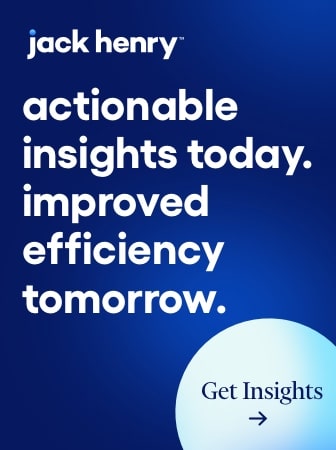The evolution of the Buy Now, Pay Later fintech (BNPL) financing business continues, now influenced in major ways by a controversial interpretive rule issued by the Consumer Financial Protection Bureau in late May.
The reaction of industry players and their trade associations varied when the rule came out, from tempered objections to enthusiastic support. Since then, all have been digesting the move. Among observers who know the BNPL business players and the efforts of banks and credit unions to compete with the fintech specialists, there is both objection to — and support for — the rule.
Predictions for the future? A mixed bag.
Some think the bureau’s move will level the playing field between fintechs and traditional institutions. Some think the rule will hasten changes already underway in the design of fintech Buy Now, Pay Later programs. Some think fundamental issues weren’t addressed, and there is speculation that there could be a second round of CFPB BNPL rulemaking, in spite of the upcoming presidential election. The bureau has been pushing reams of rules and more out the door.
Others have already made the mental jump to a third round, forecasting that once trade groups and providers have thoroughly analyzed the rule, someone (or multiple someones) will take the bureau to court — not unlike the still-pending lawsuit filed against the bureau over its rule concerning credit card late fees.
And yet from multiple quarters the rule has been greeted as a form of regulatory clarity in what has for some been a gray area for as long as a decade, when BNPL specialists first entered the U.S. retail financing arena.
One fintech that works with both banks and credit unions to offer BNPL options, which they finance , based on transactions that begin as debit card purchases is Equipifi. Bryce Deeney, CEO, says that in the weeks following CFPB’s issuance, the volume of inquiries about starting programs tripled. He puts this increase down to banks and credit unions feeling that some regulatory certainty has finally been established.
“I welcome the interpretive rule, because it legitimizes the product,” says Ruby Walia, a veteran BNPL analyst who is now chief banking officer at Skeps. He thinks giving this form of credit a regulatory framework will stimulate activity in the long run.

Solving the Deposit Puzzle: Strategies for Growth in Rate Uncertainty
Join Kasasa’s insightful webinar to explore effective strategies for navigating the complexities of rate uncertainty.
Read More about Solving the Deposit Puzzle: Strategies for Growth in Rate Uncertainty

The unfair advantage for financial brands.
Offering aggressive financial marketing strategies custom-built for leaders looking to redefine industry norms and establish market dominance.
A Legal Take on CFPB’s Regulatory Move
The bureau’s interest in Buy Now, Pay Later financing has been recognized for some time. The CFPB requested immense amounts of data from five leading nonbank BNPL providers — Affirm, Afterpay, Klarna, PayPal and Zip — in late 2021 and many anticipated that rules would be forthcoming soon. Instead, the data helped produce a large CFPB research report, followed up by smaller projects.
That long stretch may have lulled some into thinking the urgency was off.
However, “this interpretive rule about Buy Now, Pay Later got triggered right after the Supreme Court case,” says Michael Guerrero, partner at Ballard Spahr LLP. He’s referring to the Court’s mid-May decision in Consumer Financial Protection Bureau v. Community Financial Services Assn. of America, to uphold the constitutionality of the funding mechanism set up by the Dodd-Frank Act of 2010 to run the bureau. The BNPL announcement came out about a week later.
“I think this rule is more than what most folks expected,” says Guerrero. He explains that the initial report was hard-hitting, but that subsequent bureau statements about BNPL came across less harshly. “I think the rule is going to change the product,” predicts Guerrero.
From the archive: Why Consumers Don’t Think BNPL Is ‘Debt’ (and Why It Matters)
The Bureau Takes a Regulatory Bypass
The Biden CFPB, especially under Director Rohit Chopra, has established a reputation for rulemaking in ways that often go around the traditional federal regulatory development process. Banking regulation, especially when it is not based on, say, a new federal law requiring implementation, often goes through multiple rounds of proposal/comment, proposal/comment. Sometimes the back and forth takes years, a Washington ritual.
The BNPL interpretive rule saw no such preliminaries. Basically, the CFPB announced that it had concluded that BNPL pay-in-four programs essentially operated as credit cards and could therefore be regulated by federal rules governing credit cards.
“Buy Now, Pay Later lenders are credit card providers,” the bureau said. “Accordingly, Buy Now, Pay Later lenders must provide consumers some key legal protections and rights that apply to conventional credit cards.”
The bureau held that the consumers had the right to dispute charges with the BNPL providers and to demand a refund from the provider after returning merchandise bought with BNPL credit. The rule also imposes requirements for periodic statements of what BNPL borrowers have outstanding with their providers.
More specifically, the bureau labeled BNPL accounts to be “digital user accounts” and that when used for plans with payments of four or fewer, they are credit card accounts subject to rules established under the Truth in Lending Act and Regulation Z for credit cards. Unlike typical rulemaking, the bureau said it would accept comments, though it was not obligated to under the applicable law, the federal Administrative Procedures Act.
This took providers by surprise. Credit cards are a form of open-ended credit — customers can draw on a credit line and choose to pay their bill in full or to revolve. The relationships can last for years. BNPL credit is structured as a closed-end credit — after the installments get paid, the account is closed. (The argument CFPB makes is interesting and can be read in the opening pages of the interpretive rule.)
The interpretive rule, as issued, will be effective 60 days after publication in the Federal Register — July 30.
“This is the stuff we live and breathe and we’re still working through the rule,” says Guerrero of himself and fellow consumer finance legal experts. “The industry must be struggling.”
Read more: Buy Now, Pay Later Needs to Pay Off in 2024

A Big Wet Blanket for BNPL’s Fintechs?
Because the bureau took this unusual approach, it basically said that it was putting a new but existing set of requirements on fintech BNPL all at once, says Gary Stein, who spent over nine years in staff positions at the bureau. Stein, who has been a financial services consultant, regulator and executive at installment plan firm Openpay, is presently partner and head of regulatory and compliance advisory at 99Fintech.
Part of the reason for the rule’s “express track” treatment is the need to have it in place early enough to get out from under the “lookback period” that a new administration can use to easily quash rules an agency promulgates in the closing days of the preceding administration. (Technically, this is the prerogative of Congress, but likely a combination of a new administration of the opposing party working in cooperation with Congress under the Congressional Review Act. The act was used during the Trump administration to overturn 16 regulations from late in the Obama administration and three rules from the last days of the Trump administration were killed during the first days of the Biden administration, according to an extensive article on the act from The George Washington University.)
“So they’ve got to get this done by October at the latest,” explains Walia.
Guerrero thinks it’s unfair to impose massive compliance duties with a short lead time on an industry that has been around for close to a decade. Some suggest that some phase in period might be in the offing, though nothing has been said by the CFPB on that point.
Read more: Gen Z Credit Card Use is Outpacing Millennials’, Amid Financial Stress and Ballooning Debt

Navigate And Win The Branch Transformation Race
Learn how to navigate and win over customers with the right branch transformation. Listen to JP Lacroix and Marbue Brown discuss strategies, insights, and more.
Read More about Navigate And Win The Branch Transformation Race

Accelerate Time-to-Market with Rapid Implementation
Create a sustainable competitive advantage with faster time to market by drastically reducing implementation time.
Read More about Accelerate Time-to-Market with Rapid Implementation
How Some BNPL Company Voices Have Reacted to CFPB’s Move
Klarna issued a statement that said the bureau’s move was a “significant step forward” in establishing BNPL regulation in the U.S. However, beyond that conciliatory stance, the company questioned the approach.
“We have long supported and called for bespoke, proportionate BNPL regulation that fits the unique nature of the products, fosters innovation, and ensures consumer protection for years,” Klarna said. “It is baffling that the CFPB fails to acknowledge the fundamental differences between BNPL and credit cards in their guidance and this announcement does nothing to address the $1.15 trillion in credit card debt.”
“Trying to regulate BNPL like a credit card is like comparing apples with oranges.”
— Klarna statement on CFPB interpretive rule
Klarna pointed out that its mainline product “is short-term, no-interest credit with no fees when paid on time,” underwritten afresh with each transaction. The company also said that it was already complying with the rule’s thrust.
Affirm, which in analyst presentations has discussed hopes to become major factor in payments in general, took a more supportive tone: “We are encouraged that the CFPB is promoting consistent industry standards, many of which already reflect how Affirm operates… We urge other companies that offer Buy Now, Pay Later products to live up to the industry’s promise to provide consumers with a more flexible and transparent alternative to other payment options.”
Zing.
The Financial Technology Association, which includes Afterpay, Klarna, PayPal, and Zip, took credit cards head on, saying that BNPL providers’ services “have zero interest on outstanding balances, no ability to revolve a balance, and a profit model centered on user success. We look forward to providing additional comments to the CFPB and distinguishing BNPL from products whose business models rely on revolving debt and high consumer fees.”
By contrast, the American Fintech Council said the bureau rule “provides vital clarity” for BNPL specialists. The group’s membership includes Affirm as well as numerous banking as a service banks, fintechs like Chime and Dave and neobanks like SoFi.
Not all fintech BNPL programs operate identically. For example, the perspective of fintech player Splitit differs in part because it is designed to split purchases during the transaction, embedded in the checkout.
In response to emailed questions, Splitit says “many of the legacy BNPL platforms may need to implement operational changes to align with the proposed regulations.” It also said that competitive balance could change.
“The regulation could alter the BNPL market dynamics, favoring larger providers who can more easily absorb these costs, potentially leading to market consolidation,” the company commented.
Read more: Shocker: Amex, Chase and Citi Top BNPL Satisfaction Rankings

Implications of CFPB’s Rule for BNPL Going Forward
Observers suggest that with one stroke the CFPB has leveled the playing field between fintech BNPL providers and banking institutions. Banks typically have not gone in for the “classic” merchant-based pay-in-four plans, except as providers of banking services to the fintechs. They have more typically gone in for programs that convert credit card purchases into payment plans. However, all BNPL variations, as well as credit card programs, compete for consumer payments and financing volume — it’s all one pie.
Skeps’ Ruby Walia points out that banks offering BNPL or installment plans typically took on the job of handling dispute resolution and refunds, because many of the institutions already had the staff and procedures in place as part of their credit card programs. This will be a leg-up for traditional institutions vis-à-vis fintechs that hadn’t developed robust customer service frameworks, he suggests. Walia says that while some fintech BNPL providers say they are doing this already, his impression has been that often they attempted to deflect disputes and returns onto merchants.
On the fintech side, “there’s a definite barrier to entry now,” says Ballard Spahr’s Guerrero, with not only an extensive compliance program expected, but both the disputes and returns and statements functions to be adopted and staffed.
Silver Lining for Banking?:
In a sense, traditional institutions, with their birthright of longstanding regulatory burden, have already been through the gauntlet over the decades as regulations developed. Fintechs find themselves in catchup mode.
There’s also the implication that with a regulatory framework now in place, CFPB examinations can be expected.
In theory, given that CFPB has put the fintech providers under an existing body of regulation, one can speculate that retroactive enforcement might follow — being held responsible for compliance with requirements applied now to the past. Thus far, that’s not expected.
“Not incredibly likely,” says Guerrero.
But Guerrero and Gary Stein both think the CFPB’s process here is ripe for litigation.
Stein says this has become almost standard operating procedure for some aspects of CFPB regulation. Reading between the lines of Klarna’s response to the rule, he says, the BNPL behemoth is clearly frustrated by the bureau’s actions. And he’s a bit skeptical about the bureau doing anything with industry suggestions, even if it says it is accepting comments on the interpretive rule. (As of early June, very few comments had been filed, in spite of the short schedule.)
Read more: Should Banks Beware Credit Score ‘Grade Inflation’?

Industry Cloud for Banking from PwC
PwC’s Industry Cloud for Banking applies our deep industry knowledge to your specific business needs.

Data Insights Deliver: Bank Reaches 113% ROMI with Segmentation
Uncover the techniques behind this bank's impressive ROI boost through data-driven marketing.
Read More about Data Insights Deliver: Bank Reaches 113% ROMI with Segmentation
Rule Will Be One More Factor in BNPL’s Evolution
Observers point out that even before the rule came out, BNPL in a broad sense had already been undergoing changes. More banks and fintechs have started offering longer-term, interest-bearing installment plans, beyond pay-in-four, especially for larger purchases, for example. Stein says he sees these contained financing packages as easier for some consumers to handle than struggling to manage their revolving credit cards.
Walia says that something CFPB fails to appreciate, in its zeal to protect consumers from overextension, is that neither bank nor fintech lenders want to lose money. He says he’s seen private research indicating that BNPL credit is already tightening and could tighten further. The data he’s seen says that lenders have moved from a threshold FICO credit score of 550 to 600, for example.
While pay-in-four historically had been an entry-level form of financing, Stein sees it increasingly as a product for people with higher ratings. “I wonder how long the pay-in-four model will exist for the broad population,” he says, between the reality of higher funding costs due to higher market rates and the interpretive rule.
Periodically CFPB has raised the point that consumers were using BNPL more often than they should, though nothing about the bureau rule addresses the issue of “phantom debt.” The term applies to indebtedness that’s substantially invisible to consumer lenders because much BNPL debt doesn’t show up in the records of the three major credit bureaus. (At least one independent BNPL credit bureau is under development.)
Walia says overuse of consumer credit is a claim that’s not exclusive to BNPL. It’s been made about credit cards for years. He says it important to understand that “nobody wants losses” and that the market will tend to adjust lending of all kinds to produce optimum performance.







